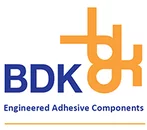Cleanrooms are vital for medical device manufacturing because they provide a controlled environment which effectively minimises the risk of contamination. This ensures both the safety and reliability of medical devices for healthcare settings.
Different cleanroom classifications are based on the number of particles allowed per cubic metre of air.
The European standard for cleanroom classification is referred to as “Classification of Air Cleanliness” or BS EN ISO 14644-1:2015. At BDK, we operate three class 7 (class 10,000) cleanrooms which are bio-burden controlled to ensure compliance with BS EN ISO 14644. We have recently increased our environmental control and monitoring level to align with GMP category 3 protocols.
In this article, we’ll explore the key parameters that are monitored for cleanrooms further.
Maximum concentration limits (particles/m3 of air for
particles equal to and larger than the sizes listed below)
| Class | FED STD 209E Equivalent | 0.1 micron | 0.2 micron | 0.3 micron | 0.5 micron | 1 micron | 5 micron |
| ISO 1 | 10 | 2 | |||||
| ISO 2 | 100 | 24 | 10 | 4 | |||
| ISO 3 | 1 | 1,000 | 237 | 102 | 35 | 8 | |
| ISO 4 | 10 | 10,000 | 2,370 | 1,020 | 352 | 83 | |
| ISO 5 | 100 | 100,000 | 23,700 | 10,200 | 3,520 | 832 | 29 |
| ISO 6 | 1,000 | 1,000,000 | 237,000 | 102,000 | 35,200 | 8,320 | 293 |
| ISO 7 | 10,000 | 352,000 | 83,200 | 2,930 | |||
| ISO 8 | 100,000 | 3,520,000 | 832,000 | 29,300 | |||
| ISO 9 | 8,320,000 | 293,000 |
Key Cleanroom Parameters
Particulate Levels
The ISO 7 specification for cleanrooms permits up to 352,000 particles per cubic metre for particles 0.5 microns or larger. The ISO 8 specification permits up to 3,520,000 particles per cubic metre for particles 0.5 microns or larger. This can be measured with particle counters and the frequency of monitoring will differ depending on the ISO specification. Particulate and contamination levels are important to ensure full sterilisation can be achieved and to keep the sterilisation dose low, so there are no adverse effects on materials and their performance.Temperature & Humidity
Temperature and humidity are both controlled as they can have an effect on the following parameters:- Adhesive Bonding: Both temperature and humidity significantly affect curing and adhesion quality.
- Static Control: Low humidity increases static discharge risk, which can damage sensitive electronics.
- Microbial Growth: High humidity promotes microbial proliferation, which is critical in sterile environments.
- Material Stability: Fluctuations in temperature and humidity can cause expansion, contraction, or degradation of materials.
